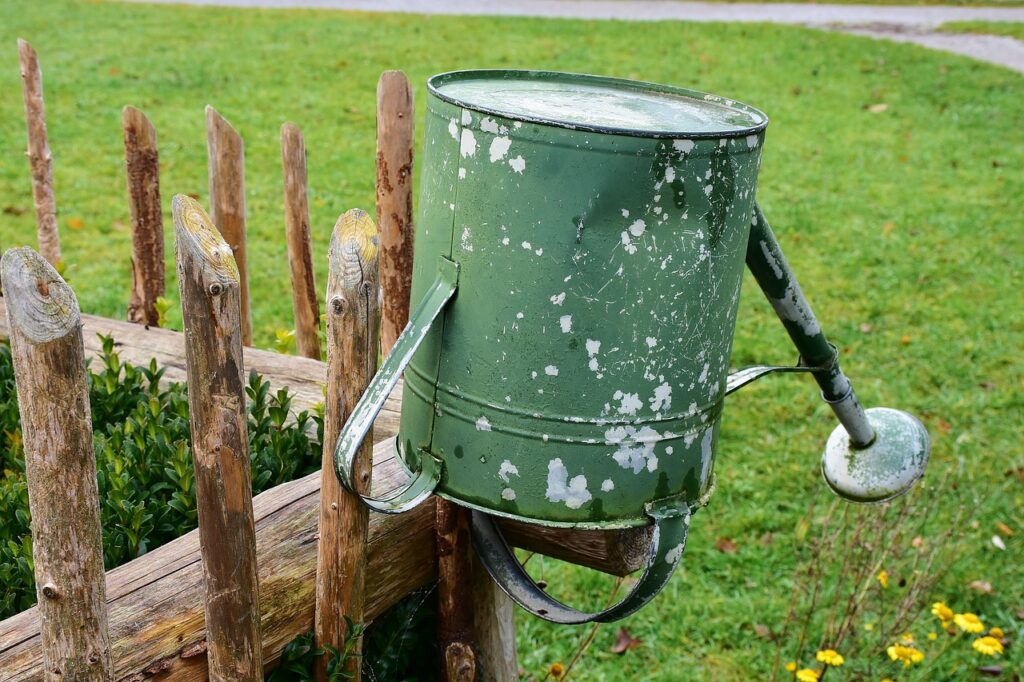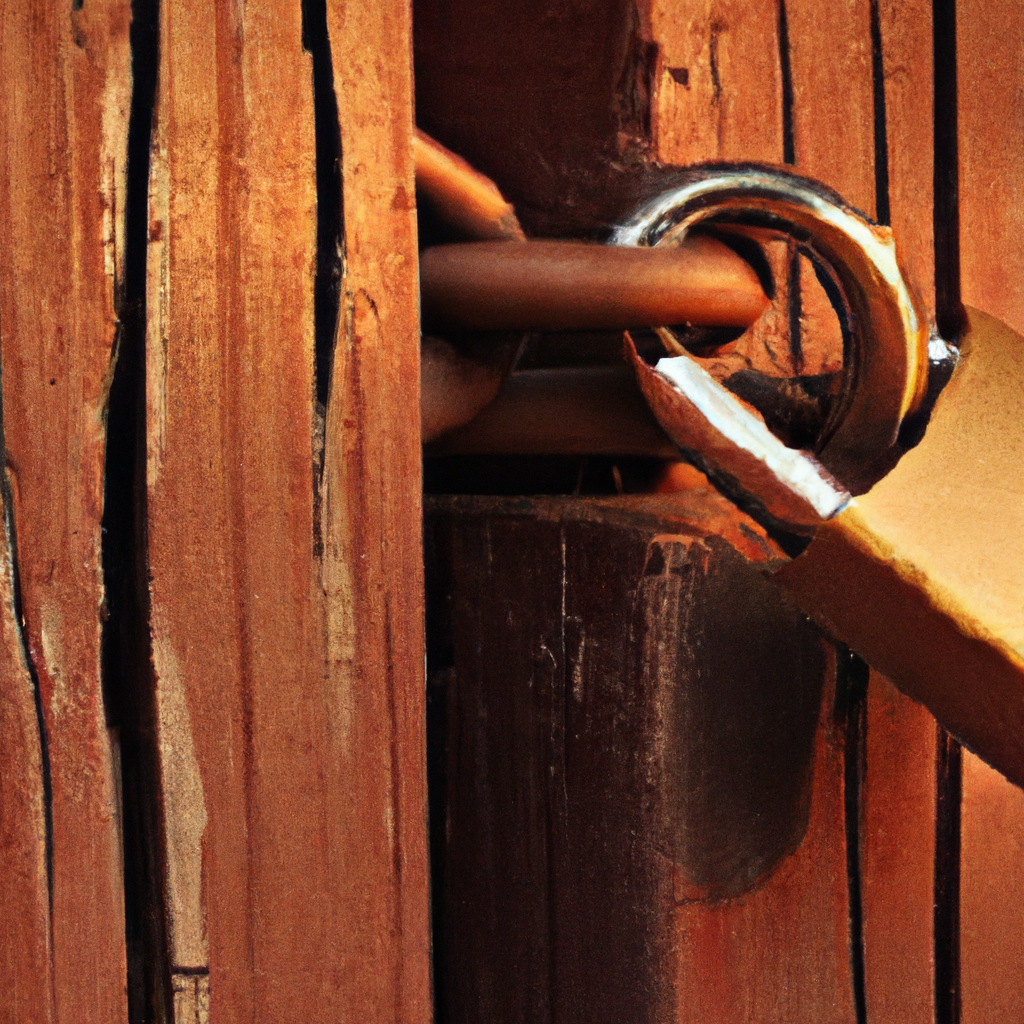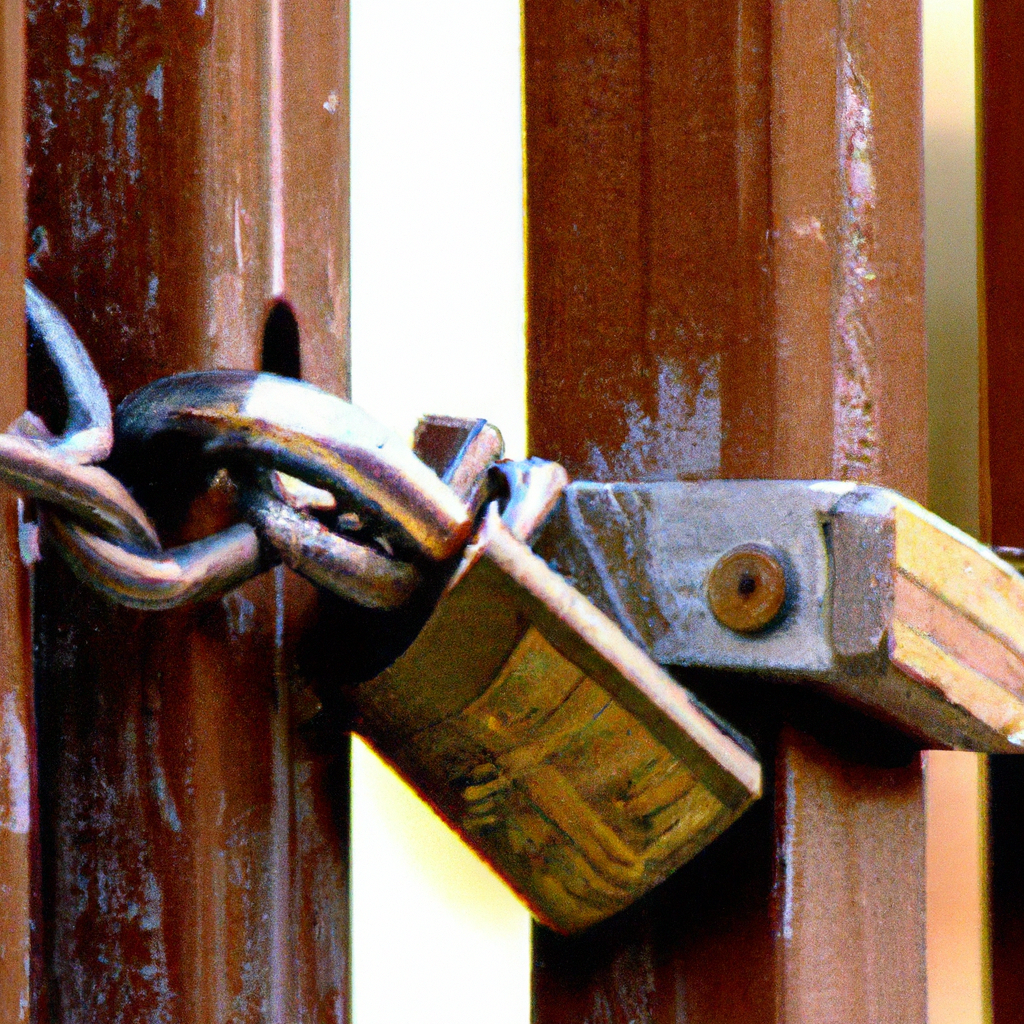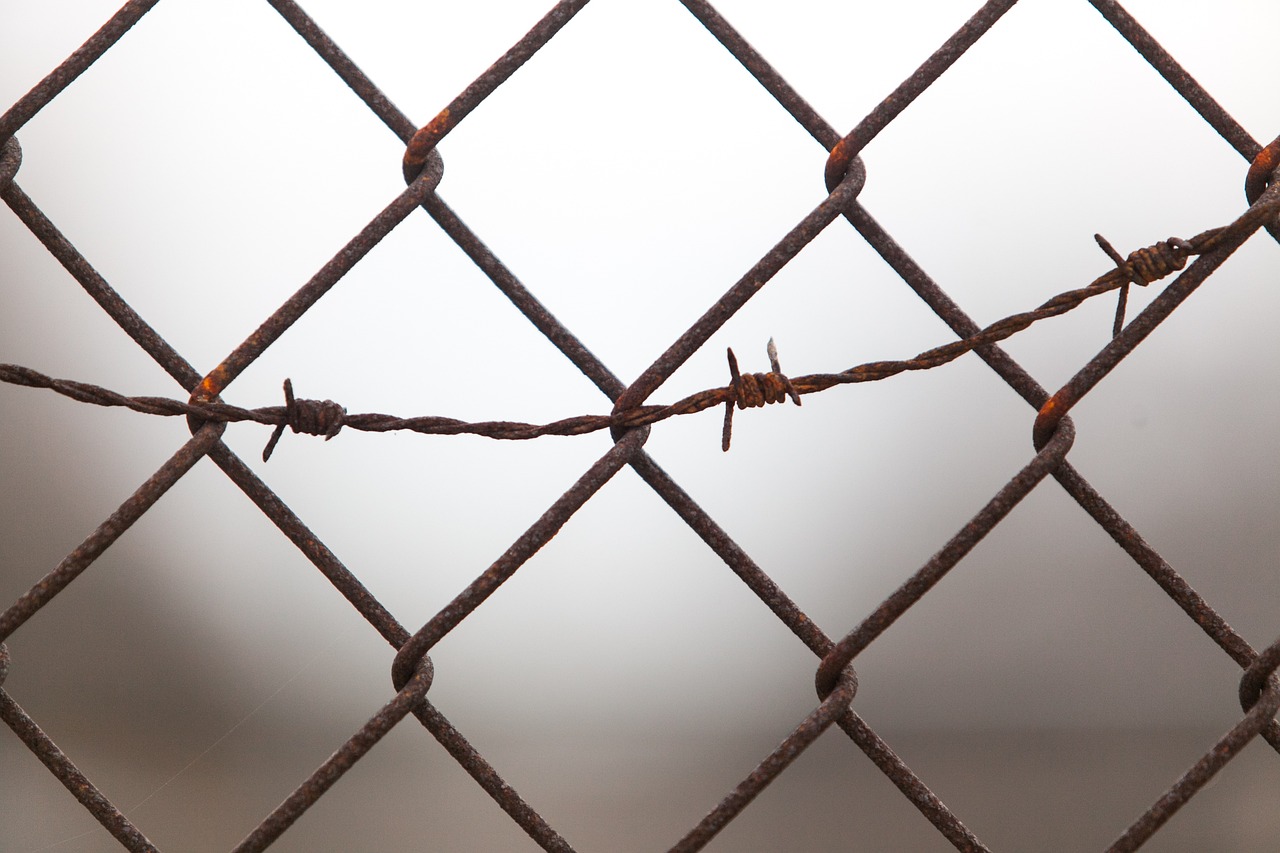Looking to protect your fence from moisture damage? Well, look no further! In this article, you will find all the necessary information and practical tips to keep your fence in pristine condition. Whether you have a wooden fence, a vinyl fence, or any other type, moisture can be a common culprit for damage. We will delve into the causes and consequences of moisture damage, as well as provide step-by-step instructions on how to prevent it. From regular maintenance routines to choosing the right materials, we’ve got you covered. So, let’s jump right in and ensure your fence stays dry and durable for years to come.
Why Protecting Your Fence from Moisture Damage is Important
When it comes to maintaining the longevity and appearance of your fence, protecting it from moisture damage is crucial. Moisture can wreak havoc on fences, leading to issues such as rotting, warping, discoloration, and even structural damage. By understanding the effects of moisture damage and implementing preventive measures, you can ensure the durability and aesthetic appeal of your fence for years to come.
Effects of Moisture Damage on Fences
Moisture damage can have detrimental effects on fences, regardless of the material they are made from. Wood, metal, vinyl, and chain-link fences are all vulnerable to the harmful effects of moisture.
For wooden fences, exposure to moisture can lead to rotting, which weakens the structure and compromises its stability. Moisture can also cause warping, cracking, and splitting in the wood, resulting in an unsightly appearance and the need for costly repairs or replacement.
Metal fences, especially those made of iron or steel, are prone to rust when exposed to moisture. Rust not only diminishes the visual appeal of the fence but can also weaken its structure and compromise its security. If left unaddressed, rust can eat away at the metal, causing holes and structural instability.
Vinyl fences can suffer from moisture-related issues such as mold and mildew growth. These can not only mar the appearance of the fence but also pose health risks and contribute to the degradation of the material over time. Additionally, prolonged exposure to moisture and sunlight can cause vinyl to become brittle and crack.
Even chain-link fences are not exempt from moisture damage. Rust can develop on the metal components, and excessive moisture can cause corrosion and degradation of the fence’s structural integrity.

Importance of Preventive Measures
Implementing preventive measures to protect your fence from moisture damage is essential to avoid costly repairs or premature replacement. By taking proactive steps, you can prolong the life of your fence and maintain its beauty. Here are some key benefits of protecting your fence:
-
Longevity: Moisture damage can significantly decrease the lifespan of your fence. By implementing preventive measures, you can extend its longevity and avoid incurring unnecessary costs for repairs or replacement.
-
Aesthetics: A fence is not just a functional structure but also contributes to the overall curb appeal of your property. Protecting your fence from moisture damage ensures it remains visually appealing and enhances the overall appearance of your home.
-
Value: A well-maintained and protected fence adds value to your property. If you plan to sell your home in the future, having a sturdy and visually appealing fence can attract potential buyers and increase the market value of your property.
-
Safety and Security: A fence is often installed to provide security and privacy. Moisture damage compromises the structural integrity of the fence, making it vulnerable to break-ins or compromising privacy. Preventive measures help ensure your fence remains strong and reliable.
-
Cost Savings: Regular maintenance and preventive measures are more cost-effective than dealing with extensive repairs or replacement. By investing in moisture protection upfront, you can save money in the long run.
Identifying Signs of Moisture Damage
To effectively protect your fence from moisture damage, it’s crucial to identify the signs of existing or potential issues. Regularly inspecting your fence can help you catch problems early on and take the necessary steps to address them. Here are some tips for inspecting your fence and common signs of moisture damage to look out for:
Inspecting Your Fence Regularly
Make it a habit to inspect your fence at least once a year, preferably before the onset of the rainy season. During the inspection, carefully examine every section of the fence, focusing on vulnerable areas such as the bottom part, posts, and joints. Look for any signs of damage, discoloration, warping, or other abnormalities.
Common Signs of Moisture Damage
-
Rotting Wood: If you notice soft, spongy, or discolored spots on the wood, it is likely a sign of rotting. Gently press on suspect areas to determine if the wood is weakened.
-
Warping and Cracking: Warped or cracked wood can indicate moisture damage. Pay attention to any sections that appear bent, twisted, or separated.
-
Rust Stains: Rust-colored stains on metal fences are a clear sign of oxidation and should be addressed promptly to prevent further corrosion.
-
Mold or Mildew Growth: Black or green spots on vinyl or wood fences indicate mold or mildew growth. These not only mar the appearance but can also lead to further deterioration if left untreated.
-
Discoloration: Any significant discoloration or fading of the fence can indicate sun and water damage, which needs to be addressed to maintain the fence’s appearance.

Choosing the Right Fence Material
Selecting the right fence material is crucial for ensuring moisture resistance and durability. Different materials have varying levels of resistance to moisture damage, and considering certain factors can help you make an informed decision. Here are some key considerations when choosing a fence material:
Best Materials for Moisture Resistance
-
Cedar: Cedar is a popular choice for wooden fences due to its natural resistance to rot and insect damage. It has natural oils that act as a barrier against moisture, making it an excellent option for areas with high humidity or rainfall.
-
Aluminum: Aluminum is a metal fence material that is highly resistant to rust and corrosion. It is a reliable choice for moist climates or areas near the coast where salt spray can accelerate corrosion.
-
Vinyl: Vinyl is inherently moisture-resistant and doesn’t require sealing or staining like wood. It is impervious to rot, mold, or mildew growth, making it an ideal choice for wetter climates or locations with high humidity.
Factors to Consider When Selecting Fence Material
-
Climate: Consider the climate in your area, including average rainfall, humidity levels, and temperature fluctuations. Choose a material that can withstand the specific climatic conditions to ensure longevity and minimal moisture damage.
-
Maintenance Requirements: Different fence materials have varying maintenance needs. Consider the time and effort you are willing to invest in maintaining the fence, including cleaning, staining, sealing, or repainting, to choose a material that aligns with your preferences.
-
Budget: Set a budget for your fence project, including the cost of materials, installation, and potential maintenance or repairs. Different materials have varying price ranges, so take this into account when making your selection.
-
Aesthetic Appeal: The appearance of your fence is an important consideration. Choose a material that complements the style and architecture of your property while also meeting your functional requirements.
Preparing Your Fence for Moisture Protection
Before applying any moisture-protective measures to your fence, it’s important to clean and prepare the surface properly. This ensures maximum adhesion and effectiveness of the waterproofing solutions. Here are the steps to follow:
Cleaning and Preparing the Surface
-
Remove Debris: Start by clearing away any leaves, dirt, or vegetation around the fence. Use a broom or leaf blower to get rid of loose debris.
-
Wash the Fence: Clean the surface of the fence using a mild detergent and water solution. Scrub any stubborn stains or stuck-on dirt with a soft brush or sponge. Rinse thoroughly with clean water.
-
Allow Drying Time: Give the fence ample time to dry completely before proceeding with any waterproofing products. This is crucial to ensure proper adhesion and penetration of the protective solution.
Removing Existing Damage
Inspect the fence for any existing moisture damage, such as rot, rust, or mold. Take the necessary steps to address and repair these issues before applying any protective measures. This may involve replacing damaged wood, sanding rusted metal, or treating mold with a specialized cleaner.

Applying Waterproofing Solutions
Once your fence is clean and in good condition, it’s time to apply waterproofing solutions to protect it from moisture damage. The type of product and application technique will depend on the material of your fence. Here are some common options:
Types of Waterproofing Products
-
Wood Sealers and Stains: For wooden fences, consider using a quality wood sealer or stain. These products penetrate the wood, providing a protective barrier against moisture, UV rays, and mold growth.
-
Metal Primers and Paints: Metal fences can benefit from primers and paints specifically formulated for rust prevention. These products create a barrier against moisture, preventing oxidation and corrosion.
-
Vinyl Protectors: There are specialized vinyl protectants available that enhance the UV resistance and water repellency of vinyl fences. These products help maintain the appearance and strength of the material.
Proper Application Techniques
-
Follow Manufacturer’s Guidelines: Read and follow the instructions provided by the manufacturer of the waterproofing product. This ensures you apply the product correctly and achieve optimal results.
-
Use Appropriate Tools: Select the right tools for the job, whether it’s a brush, roller, or sprayer. This ensures even application and effective coverage.
-
Apply in Ideal Conditions: Choose a dry and mild day for applying waterproofing solutions. Avoid extremely hot or cold weather, as it can affect the drying and curing process.
-
Multiple Coats: Depending on the product and material, multiple coats may be necessary. Follow the recommended drying time between coats for best results.
Protecting Wooden Fences
Wooden fences are particularly vulnerable to moisture damage, but with the right protective measures, you can ensure their longevity and beauty. Here are some specific techniques for protecting wooden fences:
Sealing and Staining Wood
-
Sealing: Start by sealing the wood with a quality wood sealer that is specifically formulated for exterior use. This helps create a protective barrier against moisture penetration.
-
Staining: Consider applying a wood stain after sealing. Stains not only add color and enhance the appearance of the fence but also provide an additional layer of protection against UV rays and moisture.
Preventing Water Absorption
-
Proper Drainage: Ensure proper drainage around the fence by slope grading the ground away from the fence. This helps prevent water from pooling at the base of the fence, reducing the risk of water absorption.
-
Trim Plants: Avoid planting vegetation too close to the fence. Overhanging branches or vines can trap moisture against the wood, leading to faster decay and rot.

Protecting Metal Fences
Metal fences, especially those made of iron or steel, are susceptible to rust and corrosion caused by moisture. Taking proactive measures to protect them can significantly extend their lifespan. Here’s how to protect metal fences:
Rust Prevention Measures
-
Remove Existing Rust: If your metal fence already has rust spots, remove them using a wire brush or sandpaper. Smooth out the surface to ensure proper adhesion of the protective coating.
-
Anti-Rust Primers: Apply a rust-inhibiting primer specifically designed for metal fences. This primer creates a barrier against moisture, preventing rust formation.
Coating and Painting Metal
-
Protective Coatings: Consider applying a protective coating or paint designed for metal surfaces after applying the primer. This adds an extra layer of protection against moisture and ensures a longer-lasting finish.
-
Maintenance Inspections: Regularly inspect your metal fence for signs of rust or damage. Address any issues promptly to prevent further deterioration.
Protecting Vinyl Fences
Vinyl fences are known for their durability and low maintenance requirements. However, they still benefit from proper care to prevent moisture damage and uphold their appearance over time. Here’s how to protect vinyl fences:
Cleaning and Maintaining Vinyl
-
Regular Cleaning: Clean your vinyl fence at least once a year using a gentle detergent and water solution. Scrub away any mold, mildew, or stains using a soft brush or sponge.
-
Avoid Harsh Chemicals: Avoid using abrasive cleaners or harsh chemicals on your vinyl fence, as they can damage the surface. Stick to mild cleaners and water to preserve its integrity.
Avoiding Sun Damage
-
Sunscreen for Vinyl: Consider using a vinyl protectant or sunscreen specifically formulated for vinyl fences. These products help prevent fading, cracking, and drying caused by excessive sun exposure.
-
Shade and UV Protection: Planting trees or installing shade structures near your vinyl fence can offer additional protection against the sun’s damaging UV rays.

Protecting Chain-Link Fences
Chain-link fences may not be as susceptible to moisture damage as wood or metal fences, but they still require proper maintenance to prolong their lifespan and appearance. Here’s how to protect chain-link fences:
Inspecting and Repairing Chain-Link
-
Regular Inspections: Regularly inspect your chain-link fence for signs of damage or rust. Look for loose or damaged sections, rust spots, or bent wires.
-
Repair or Replace: If you notice any issues, promptly repair or replace the damaged components. This ensures the fence remains sturdy and minimizes the risk of further moisture damage.
Applying Protective Coatings
-
Anti-Rust Sprays: Apply an anti-rust spray to the metal components of the chain-link fence to prevent rust formation. This is especially important for fences located in coastal or moist environments.
-
Chain-Link Paints: Consider using specialized chain-link paints that provide protection against moisture and rust. These paints adhere well to the surface and create a barrier against environmental elements.
Additional Tips for Moisture Protection
In addition to the specific techniques for protecting different types of fences, here are some extra tips to enhance moisture protection:
Proper Drainage and Landscape Planning
-
Gutters and Downspouts: Ensure your property’s gutters and downspouts are directing water away from your fence. This helps prevent excessive water accumulation in the vicinity of the fence.
-
Gravel or Mulch Beds: Create gravel or mulch beds around the fence base to improve drainage. These materials allow water to flow away from the fence, reducing the risk of moisture damage.
Regular Maintenance and Upkeep
-
Trim Vegetation: Regularly trim any overhanging branches, vines, or plants that may be touching or leaning against your fence. This helps prevent moisture retention and improves air circulation.
-
Schedule Inspections: Make it a habit to inspect your fence at least once a year and address any issues promptly. Regular maintenance can catch problems early on and prevent extensive damage.
Remember, proper moisture protection is an ongoing process. Regularly maintaining and inspecting your fence, as well as addressing issues promptly, will ensure its long-term durability and beauty.
Common Questions:
-
Can I protect my fence from moisture damage myself, or do I need professional help?
- While you can take measures to protect your fence from moisture damage yourself, seeking professional help can ensure proper application of sealers, stains, or coatings, especially for larger or more complex fence installations.
-
Is sealing or staining the wood fence enough to protect it from moisture damage?
- Sealing or staining a wood fence provides a good level of protection against moisture damage. However, regular inspections, ongoing maintenance, and addressing any issues promptly are also crucial to ensure long-term protection.
-
How often should I inspect my fence for signs of moisture damage?
- It is recommended to inspect your fence at least once a year, preferably before the rainy season or during your regular maintenance routine. Additionally, keep an eye out for any sudden changes in appearance or signs of damage after severe weather events.
-
Can I apply waterproofing solutions to a vinyl fence?
- While vinyl fences are naturally resistant to moisture, applying specialized vinyl protectants can further enhance their durability and appearance. These products help guard against sun damage and maintain the fence’s integrity.
-
Is it necessary to remove existing damage on a metal fence before applying protective coatings?
- Yes, it is crucial to remove any existing rust, corrosion, or damage on a metal fence before applying protective coatings. This ensures proper adhesion and prevents further deterioration.
-
How long do waterproofing solutions typically last on fences?
- The longevity of waterproofing solutions varies depending on factors such as climate, maintenance, and the specific product used. It is advisable to reapply sealers, stains, or coatings every few years or as recommended by the manufacturer.
-
Does a chain-link fence require the same level of moisture protection as wooden or metal fences?
- While chain-link fences are less susceptible to moisture damage, regular inspections, repairs, and applying anti-rust sprays or paints can help maintain their appearance and integrity.
-
Do I need to hire a professional to clean and maintain my vinyl fence?
- Cleaning and maintaining a vinyl fence can be done by homeowners themselves. However, if you prefer to have professionals handle the task, there are specialized fence cleaning and maintenance services available.
-
Are there any natural or eco-friendly alternatives to chemical sealers or stains for wooden fences?
- Yes, there are eco-friendly and natural alternatives available, such as linseed oil, tung oil, or beeswax-based sealers. These products provide moisture protection while minimizing the use of harmful chemicals.
-
Can I prevent moisture damage by planting shrubs or bushes near my fence?
- While plants can provide some level of shade and improve aesthetics, be cautious when planting near your fence. Leave enough space for air circulation and ensure the plants do not trap moisture against the fence, as this can contribute to moisture damage.
| Question | Answer |
|---|---|
| 1. What is the best material for a fence in a high-moisture climate? | Cedar is considered one of the best materials for high-moisture climates due to its natural resistance to rot and insect damage. |
| 2. Can I waterproof an already painted fence? | Yes, you can waterproof an already painted fence by applying a water-repellent sealant or using waterproof paint. |
| 3. How often should I repaint my metal fence to prevent rust? | It depends on the specific paint and environmental conditions, but as a general guideline, repainting every 5-10 years is recommended to maintain protection against rust. |
| 4. Can I use bleach to remove mold or mildew from my vinyl fence? | It is not advisable to use bleach on a vinyl fence, as it can cause discoloration or damage to the material. Instead, opt for specialized vinyl fence cleaners or mild detergent solutions. |
| 5. How can I improve the drainage around my fence? | Creating a slight slope away from the fence and installing gravel or mulch beds around the base can help improve drainage. |
| 6. Should I hire a professional for fence maintenance, or can I do it myself? | Basic fence maintenance, such as cleaning and inspections, can be done by homeowners themselves. However, for more extensive repairs or if you prefer professional expertise, hiring a fence maintenance service may be beneficial. |
| 7. Are there any natural alternatives to chemical rust prevention products for metal fences? | Vinegar or lemon juice can be used as natural alternatives to remove rust on metal fences. However, a protective rust-inhibiting primer and paint are recommended for long-term prevention. |
| 8. Can I apply a wood sealer or stain to a pressure-treated fence? | Yes, pressure-treated wood can benefit from the added protection of a wood sealer or stain. However, ensure the wood has dried for a few weeks after treatment before applying the sealer or stain. |
| 9. How can I tell if my chain-link fence needs repairs? | Signs such as loose or damaged sections, bent wires, or rust spots are indications that your chain-link fence may need repairs. |
| 10. Can I paint a vinyl fence to change its color? | While it is possible to paint a vinyl fence, it is generally not recommended, as the paint may not adhere well to the surface and can result in an uneven or less durable finish. |
